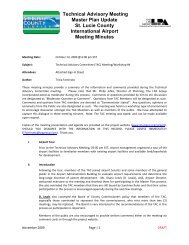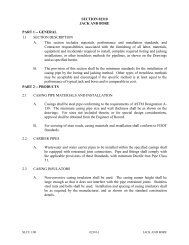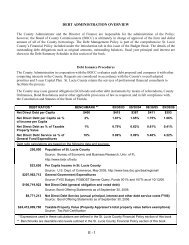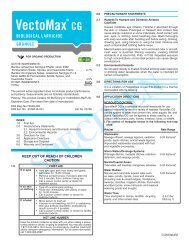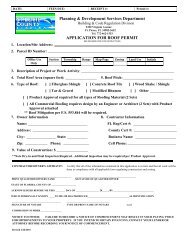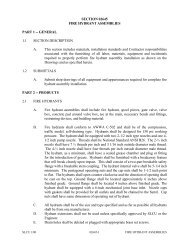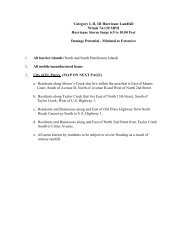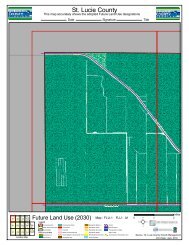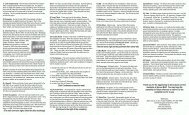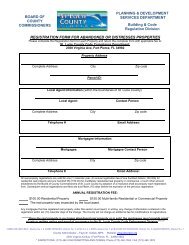Native Habitat Inventory Final Report 2004 - St. Lucie County
Native Habitat Inventory Final Report 2004 - St. Lucie County
Native Habitat Inventory Final Report 2004 - St. Lucie County
Create successful ePaper yourself
Turn your PDF publications into a flip-book with our unique Google optimized e-Paper software.
influences rather than natural influences. That is, they are often established over wide<br />
areas and across many historic habitat types. For example, a single pasture may be<br />
established in an area that once contained scrub on the deep sandy hill tops then graded<br />
into scrubby flatwoods on the downslope then transitioning to mesic flatwoods on the<br />
slightly richer flats and then graded to hardwood hammock with the richer soils and<br />
finally to bottomland forest as it approaches the creek. In this example the single pasture<br />
would be reclassified into 5 FNAI community types that range from high dry uplands to<br />
riverine associated bottomlands. This results in a less clear relationship between the<br />
FLUCCS to FNAI classifications.<br />
For example, there are 14 potentially natural FLUCCS types (Table 13). Twelve of these<br />
have a one-to-many relationship with the FNAI classification. Of these 12, only in 2<br />
cases (16.7%) does a single FNAI type account for 70% or more of that FLUCCS type.<br />
In other words, there is a predominate FNAI type for only 2 FLUCCS types.<br />
Contrast this to the natural FLUCCS types (Table 14) of which there are 23 FLUCCS<br />
types. Sixteen have a one-to-many relationship, and for 11 (68.8%) of these there is a<br />
clearly predominate FNAI type. This tighter relationship is due to the fact that, although<br />
the natural communities in FLUCCS are broader than in FNAI, they are still well-defined<br />
and delineated along natural boundaries and thus strong corollaries can be drawn between<br />
the two classification systems. Also, for these natural areas, even though several FNAI<br />
types may be listed for a single FLUCCS type, they are often closely related FNAI types<br />
(i.e., those that would naturally co-occur or intergrade into each other) or those that are<br />
generally similar in appearance but differ in the details (e.g., depression marsh and basin<br />
marsh).<br />
For each of the 37 FLUCCS types (Tables 13 and 14), a proportionality relationship was<br />
developed with the FNAI types. For each FLUCCS type, the areal amount (acreage)<br />
assigned to each FNAI type was calculated. For example, 913 acres of FLUCCS type<br />
Sand Pine (413) were sampled. Seventy-eight (78) percent of the time (719 of 913 acres)<br />
the field teams classified it as FNAI type Scrub and the other 22 percent of the time as<br />
another FNAI type (Table 14). Thus there is a one-to-many relationship between the<br />
FLUCCS and the FNAI types and that relationship is also hierarchical (i.e., FNAI type<br />
Scrub is a more likely substitute than Mesic Flatwoods for this FLUCCS type). The<br />
hierarchical relationship is represented by the percentages.<br />
Discussion<br />
As stated above, FLUCCS natural area types tend to be broad whereas FNAI types tend<br />
to be more narrowly defined, thus there is not a one to one relationship between FLUCCS<br />
and FNAI types. Instead, often a single FLUCCS type may be assigned many FNAI<br />
Natural Community types (a one to many relationship). However, there are often strong<br />
relationships. For example, Longleaf Pine-Xeric Oak was reclassified to Scrub 96% of<br />
the time.<br />
48




